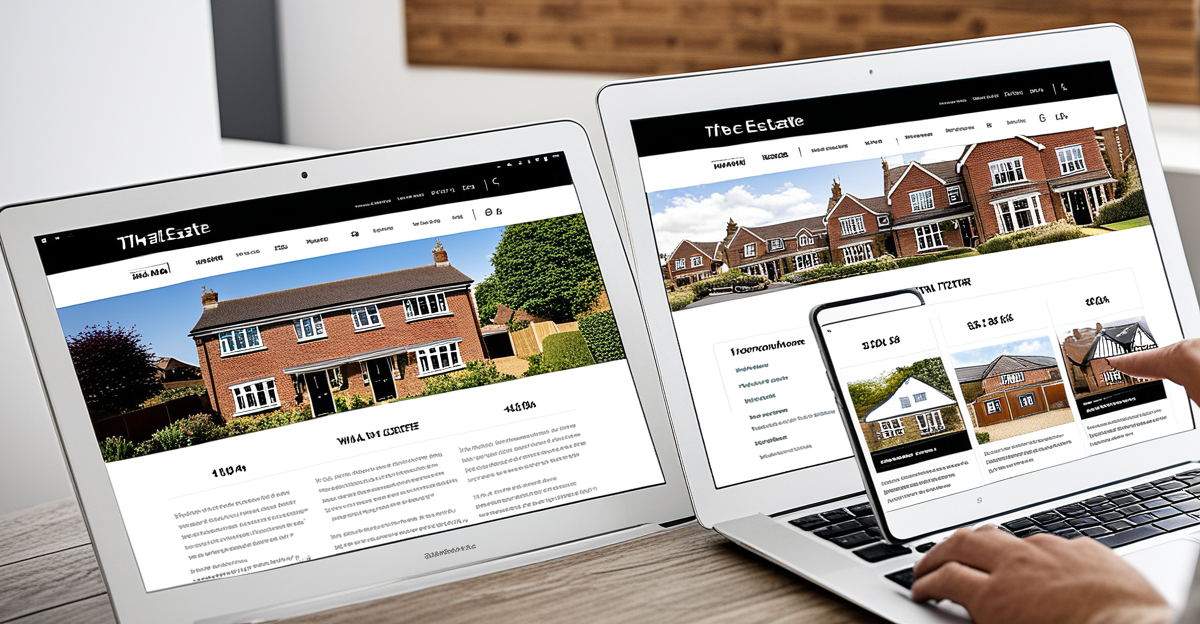Overview of the UK Real Estate Market Today
The UK property market trends are currently being shaped by a blend of economic factors and regulatory changes that directly impact UK real estate investment decisions. Inflation pressures, interest rate adjustments by the Bank of England, and government housing policies are key economic influences driving market dynamics. These factors affect property prices, mortgage availability, and investment yields, making it crucial for new investors to understand their implications.
Recent market trends highlight a shift towards regional diversification, with urban areas historically dominant in investment giving way to emerging regional hubs. Additionally, there’s increased demand for sustainability-focused developments as environmental concerns gain priority. This evolution reflects changing buyer preferences and investor strategies, broadening the scope of opportunities available.
Also read : How can you assess the potential of UK commercial real estate?
The current climate remains appealing for new investors because lowered interest rates, despite recent hikes, still present borrowing opportunities better than in past decades. Coupled with ongoing government incentives aiming to boost housing supply, the environment encourages both residential and commercial property investments. For newcomers, understanding the present market overview helps navigate these trends to capitalize on growth areas while balancing risks effectively.
Profitable Investment Options Available for New Investors
New entrants exploring investment options in the UK real estate market often consider buy-to-let, residential property, commercial property, and Real Estate Investment Trusts (REITs). Each offers varying benefits and risks that suit different investor profiles.
In parallel : What impact does UK economic policy have on real estate investments?
Buy-to-let investments remain a popular choice due to their potential for steady rental yields. These properties generate ongoing income and can appreciate over time, providing both cash flow and capital growth. However, investors need to factor in mortgage rates, maintenance costs, and tenant management responsibilities. It’s important to assess local rental demand to ensure consistent occupancy.
When comparing residential property to commercial property investments, there are notable differences. Residential properties, including single-family homes and apartments, generally offer lower entry costs and quicker sales potential. They are driven by strong housing demand and tend to be less sensitive to economic downturns. Conversely, commercial properties such as offices and retail units typically require larger capital but can yield higher rental returns and longer lease terms. However, commercial investments may face higher vacancy risks during economic slowdowns.
Real Estate Investment Trusts (REITs) provide an accessible route for first-time investors. These trusts allow individuals to invest in diversified property portfolios without direct property management. REITs often distribute regular dividends, reflecting rental income from various properties. They combine the benefits of real estate exposure with the liquidity of stock market trading. For those seeking lower entry barriers and passive income, REITs are an effective alternative.
Choosing the right investment option depends on your financial goals, risk tolerance, and investment horizon. Carefully evaluating market conditions and understanding the nuances of each asset type improves the chances of achieving favorable returns in UK real estate investment.
Regional Hot Spots for Real Estate Investment
Identifying the right regional property markets is crucial for maximizing returns in the UK real estate sector. The current UK property hot spots span beyond traditional metropolitan centers, revealing areas with robust growth and rental potential. Cities like Manchester, Birmingham, and Leeds stand out due to their expanding economies, infrastructure investments, and growing populations, which together fuel demand for housing and commercial space.
Key drivers behind these regional growth areas include economic revitalization projects, improved transport links, and a shift of businesses and residents towards more affordable locations outside London. For instance, Manchester benefits from extensive redevelopment and strong university presence that attract young professionals and students alike. Similarly, Birmingham’s growing financial services sector and improved connectivity make it appealing to investors.
Emerging best cities for investment often share characteristics such as diverse employment opportunities, favorable rental yields, and local government support for housing initiatives. Monitoring indicators like population growth rates, rental vacancy levels, and new construction permits can help pinpoint promising regions early. Understanding these factors allows investors to capitalize on upward trends before they become mainstream, optimizing the balance between risk and reward.
Entry Requirements and Barriers for New Investors
Starting with getting started in real estate in the UK requires a clear understanding of the entry requirements UK property market imposes. One of the primary barriers is the minimum capital needed. Depending on the type of investment—whether buy-to-let, commercial property, or REITs—the initial outlay can vary significantly. For physical properties, deposits typically range from 15% to 40% of the property value, while additional costs such as stamp duty, legal fees, and surveyor expenses must be considered.
Legal and tax obligations form another critical barrier for new entrants. Investors must navigate tax regulations, including income tax on rental income, capital gains tax on disposals, and potential inheritance tax liabilities. Compliance with landlord responsibilities and safety regulations also requires diligence. Engaging professional advice at an early stage can mitigate risks related to non-compliance and optimize tax efficiency.
To overcome these investment barriers, accessible resources and support systems exist to assist first-time investors. Financial institutions often offer mortgage products tailored for new landlords, while government schemes may provide incentives for affordable housing or regeneration projects. Furthermore, specialized training courses and property investment forums equip investors with knowledge and practical guidance.
Understanding these investment barriers upfront helps align expectations and develop feasible investment strategies. With thorough preparation, new investors can confidently take the first steps into the UK property market and navigate its complexities.
Risk Factors and Expected Returns in UK Real Estate
Understanding the risks in property investment is crucial for achieving favorable expected returns UK real estate offers. One of the most common risks involves market volatility, where fluctuations in property prices or rental demand can affect income and capital growth. Economic downturns, interest rate hikes, and regulatory changes may lead to reduced demand, increasing vacancy rates and lowering rental yields.
Another significant risk relates to location-specific factors. Investing in areas with declining economic prospects or oversupplied markets can result in prolonged vacancies and capital depreciation. Additionally, property condition and management impact safety and profitability; poor maintenance or tenant issues can raise costs and reduce returns.
Mitigating these risks involves thorough market research and diversification. Selecting properties in resilient regional property markets with consistent demand helps buffer economic shocks. Historically, residential properties have shown steadier returns during downturns compared to commercial assets, though commercial real estate can provide higher yields in stable times. Incorporating Real Estate Investment Trusts (REITs) also spreads risk through portfolio diversification.
Regarding returns, data indicates that typical UK real estate investments yield annual rental returns between 3% to 7%, combined with potential capital appreciation of 2% to 5% per annum in growth areas. These figures vary widely depending on location, property type, and market cycles. While buy-to-let properties often provide reliable rental income, commercial properties might deliver higher returns but come with greater vacancy risk.
Investors should weigh the balance between property investment safety and return potential. A comprehensive risk assessment aligned with personal investment goals and timelines enhances decision-making. Emphasizing long-term prospects while preparing for market fluctuations makes UK real estate a viable asset class for new investors seeking stable growth with manageable risk.
Overview of the UK Real Estate Market Today
Current UK property market trends are heavily influenced by economic indicators such as inflation rates and Bank of England policy decisions. For instance, rising interest rates increase borrowing costs, which can suppress demand for property purchases, directly impacting price growth in both residential and commercial sectors. Additionally, government initiatives focused on increasing housing supply and promoting sustainable building practices continue to reshape the market landscape, encouraging developments aligned with environmental standards.
The market overview reveals a notable shift toward more balanced regional investment, with cities outside London emerging as attractive alternatives due to affordability and infrastructure improvements. This trend creates fresh opportunities for UK real estate investment by diversifying risk and tapping into new growth corridors.
For new investors, the present climate is appealing because, despite recent interest rate hikes, the borrowing environment is still relatively favorable compared to historical highs. Coupled with government incentives targeting housing expansion, there is an enhanced potential for earning stable returns. Understanding these key economic factors and market shifts is essential for making informed decisions in today’s dynamic UK real estate market.








